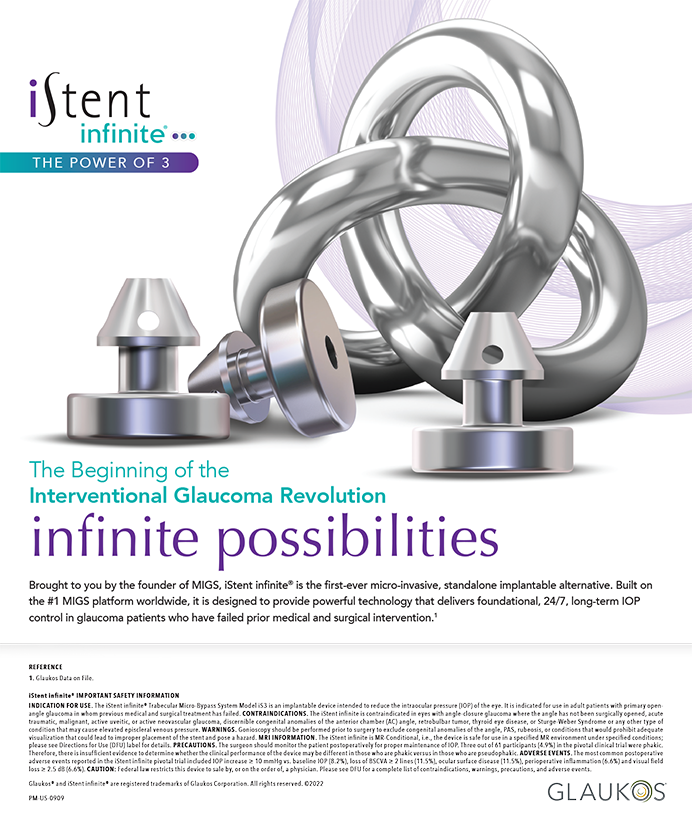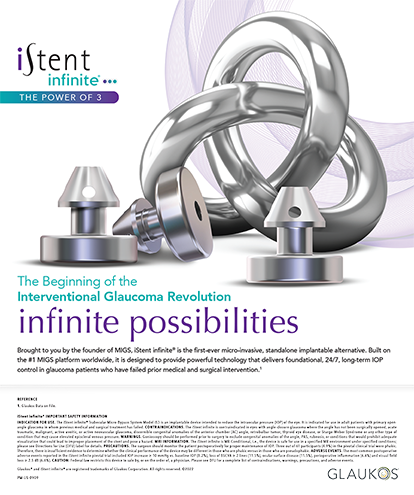Earlier this year, a survey of the first wave of US surgeon adopters of femtosecond lasers for cataract surgery was conducted by SM2 Strategic in collaboration with Lachman Consulting LLC. This survey, which drew responses from 63 surgeons practicing in 30 centers, provided insight into how this technology was being incorporated into practice during the critical first year following its introduction. All US surgeons who were using the 46 lasers installed by the end of 2011— consisting solely of the LenSx Laser (Alcon Laboratories, Inc.)—were invited to participate. The 65% response rate suggests that the survey results are highly representative of all users at the time. The survey was masked and is planned to be a yearly assessment of users of all manufacturers’ approved lasers for cataract surgery.
Top-line results of the survey were previously reported in the July 2012 issue of Cataract & Refractive Surgery Today. The procedure’s penetration for installed lasers was rapid, reaching 28% by 6 months and exceeding 30% by 9 months. Based on average costs and revenues, a total of about 1,400 laser cataract cases (23 per month) would have to be performed using the laser during 5 years to recover the $700,000 cost of equipment and service over that period. If two surgeons, each performing 500 total cataract cases per year, share a laser, and they convert 30% of their cases to laser procedures, they would surpass this break-even point. Over time, one might expect that three to five surgeons would share each laser, driving a positive return on investment.
Laser penetration into conventional IOL-cataract procedures (based on the use of the laser for the correction of astigmatism) was 13% compared with higher penetration rates into presbyopia-correcting and toric IOL procedures (70% and 42%, respectively). Conventional IOLs, however, represented 77% of the total cataract procedures among the surveyed surgeons versus 12% for presbyopia-correcting IOLs and 11% for toric IOLs. As a result, the conventional IOL segment generated a higher volume of laser cataract procedures than did either the presbyopia-correcting IOL or toric IOL segment during the first quarter of 2012. This is a classic example of the impact of a “small slice of a large pie.”
The commercial impact of the conventional IOL segment is magnified by the higher incremental fees charged by respondents for these procedures. The average package fee for conventional, presbyopiacorrecting, and toric IOLs increased by $1,304, $652, and $682, respectively. Although conventional IOLs accounted for 41% of the laser procedures in the survey, this segment accounted for 53% of total incremental procedural fee dollars. The higher incremental fees for conventional IOLs should have been expected, because patients were already paying between $1,200 and $2,500 for premium IOL procedures.
A CLOSER LOOK AT REFRACTIVE PACKAGE FEE DISTRIBUTIONS
The average fees for laser cataract procedures involving different types of IOLs tell only part of the story. There is no one-size-fits-all approach to setting fees that has been adopted by surgeons. Instead, a wide range of fee schedules has been implemented. The average incremental fee for laser procedures involving premium IOLs—defined as dollars collected in addition to fees collected for the implant and its associated services—was $667, and the range of fees was $0 to $1,500 (Figure 1). About two-thirds of the fees fell between $500 and $1,200, 29% of laser-based fees were less than $500, and 3% were between $1,300 and $1,500.
There was an even wider distribution of fees for laser procedures involving conventional IOLs, ranging from $0 to $2,450, supporting an average fee increase of $1,304 or nearly double the average fee increase for premium IOL laser procedures (Figure 2). Only two of 30 centers charged less than $795 for conventional IOL laser procedures, whereas nearly 90% charged between $795 and $1,975. For comparison, 55% of all laser fees for premium IOL procedures were less than $800. Nearly 80% of centers were charging at least $1,000 for laser procedures utilizing conventional IOLs, but only 26% of laser fees for premium IOL procedures exceeded this benchmark.
RAPID PATH TO BREAK EVEN
As noted previously, a laser would have to be used in at least 23 cataract procedures per month to achieve break-even status, based on average fee revenues and the cost of laser technology during 5 years. Of the 30 centers in the survey, 23 of them (77%) had already met or exceeded this threshold (Figure 3). Of the seven centers that had not yet reached the breakeven volume level, three were performing low overall volumes of cataract surgery (30-50 cases per month), and two of the centers were still within the first 3 months of laser usage.
PREDICTORS OF LASER CATARACT SUCCESS
Stratification of the survey results by a number of practice characteristics provides insight into factors that have been associated with early success with laser cataract surgery.
The busiest cataract surgery practices, based on overall procedural volume, did not drive above-average laser penetration rates or charge higher incremental fees for laser procedures. Given their larger base of procedures, however, higher-volume cataract centers did perform a greater number of laser procedures and generated higher overall laser-based revenues than did lower-volume cataract centers.
It is not surprising that the surgeons with the highest rates of penetration for premium IOLs drove significantly higher laser conversion rates. In fact, the 12 surgeons with the highest overall premium IOL penetration rates had an average laser penetration rate that was three times higher than the average laser penetration rate for the other 52 surgeons. This subgroup of surgeons performed fewer total cataract procedures, however, with an average total procedural volume that was 40% lower than the overall average for the survey population (519 vs 868 per year). As a result, this subgroup averaged just slightly more total laser procedures—and generated only a modest amount of additional laser-based revenue— than the laser user base as a whole.
It is also not surprising that the highest-volume LASIK surgeons, who have demonstrated success in refractive surgery, drove above-average laser cataract penetration rates, procedural volumes, and fee revenues. Interestingly, surgeons who did not perform LASIK at all achieved more initial success with laser cataract procedures than did lowvolume LASIK surgeons, perhaps because of the singular focus on cataract surgery within the former’s practices.
CONCLUSION
The most encouraging take-away message from this subgroup analysis of the survey data may be that there is no single formula for success or only one viable practice profile for surgeons and centers that adopt this new technology.
Michael Lachman, president of Lachman Consulting LLC, provides strategic advisory and market research services to companies in ophthalmology and other medical technology fields. He wishes to acknowledge Shareef Mahdavi as the study’s coauthor for the data presented herein. Mr. Lachman may be reached at (925) 939-3899; michael@lachmanconsulting.com.


